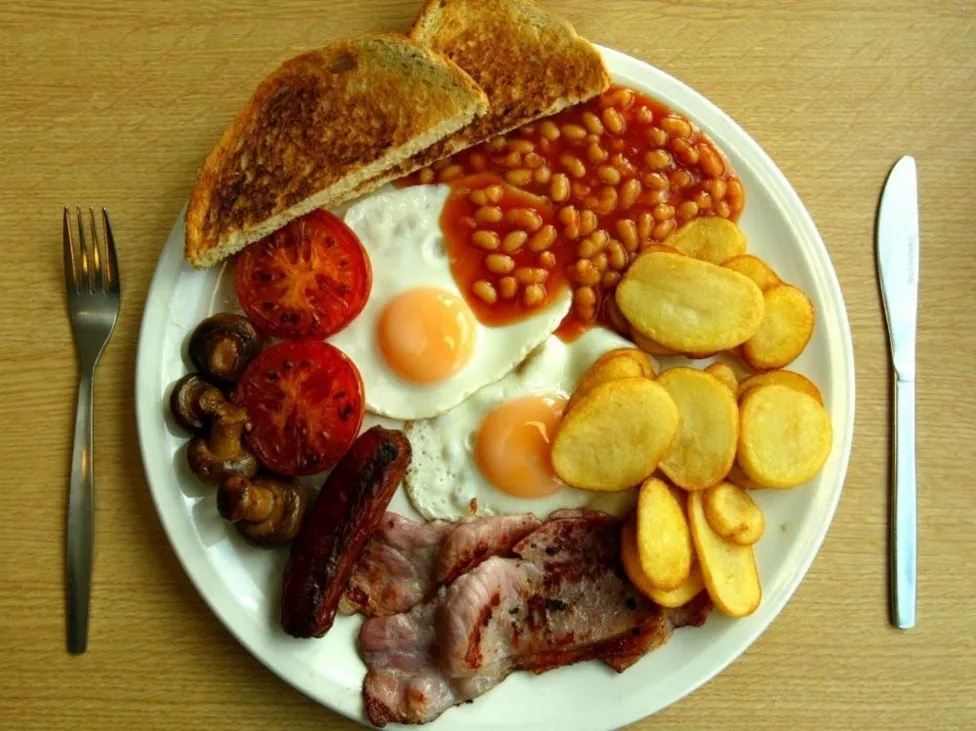In the mid-90s I used to drive my brother up to Newcastle University a few times a year.
It was a 300-mile round trip and we would do it in a day. An early start, box full of cassettes and a much-anticipated stop at a Little Chef on the way.
We always had the famous Little Chef ‘Olympic Breakfast’. A huge plate of eggs, sausage, beans, fried potatoes, tomato and mushrooms. All washed down with a large pot of tea.
Here it is in all its calorific glory:

How we ate all that and continued our journey without passing out, I do not know. The power of youth, I guess.
The feast was all the more enjoyable because, at the time, Dad used to get luncheon vouchers from the office. They were handed out to staff to help pay for lunch. I’m not entirely sure how they worked, but looking back they seemed a generous perk. Maybe the company thought it more cost-effective than a canteen.

Anyway, my Dad never used them. He would bring the little books of vouchers home and put them on the dresser in the kitchen.
Two hungry sons soon discovered these little blue books and worked out that they could be exchanged for food !
All we needed to do was look out for the green LV sticker in the window of participating cafes and restaurants. You presented the vouchers at the till to pay for your meal. There was no limit to the number of vouchers you could use. If you were lucky enough to have sufficient to pay for the whole meal then you ate for ‘free’.
Thanks to Dad’s lunchtime sandwich, made every morning before work, we almost always had a few thick books of vouchers for the journey north. So we invariably ate our huge Olympic breakfasts secure in the knowledge that we didn’t have to pay for them.
So, my brother and I would set off with a carload of uni gear and a stack of luncheon vouchers in search of a Little Chef and the University of Newcastle. In that order of importance !
Happy days !
Sadly, Little Chef is no more. As roadside dining evolved, Little Chef didn’t keep up. The restaurant chain was sold, taken over, put through a series of turnaround plans and eventually lost most of its prime locations on Britain’s major roadways.
These days you’re more likely to pull in to an American chain, like McDonalds, Burger King or Starbucks. The homegrown variants, like the trusty old Little Chefs, have long since left the roadside.
However, the spirit of the Little Chef endures. I have always admired the AutoGrills dotted along the autobahns, autoroutes and autostrada of Germany, France and Italy.
Good quality, freshly prepared hot food served by the people who cooked it. Something to look forward to rather than something to be endured.
You can read the story of Little Chef’s demise here.

